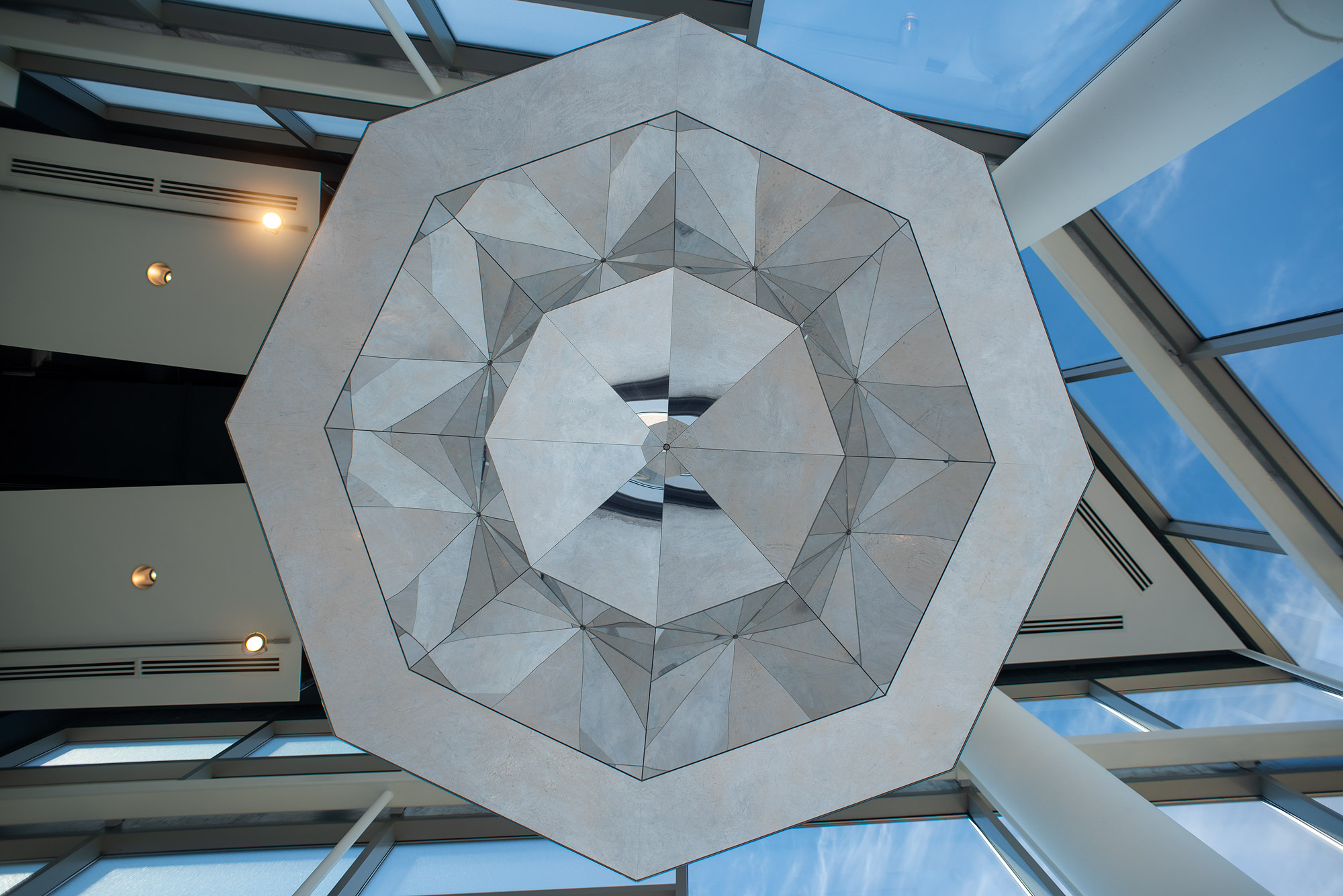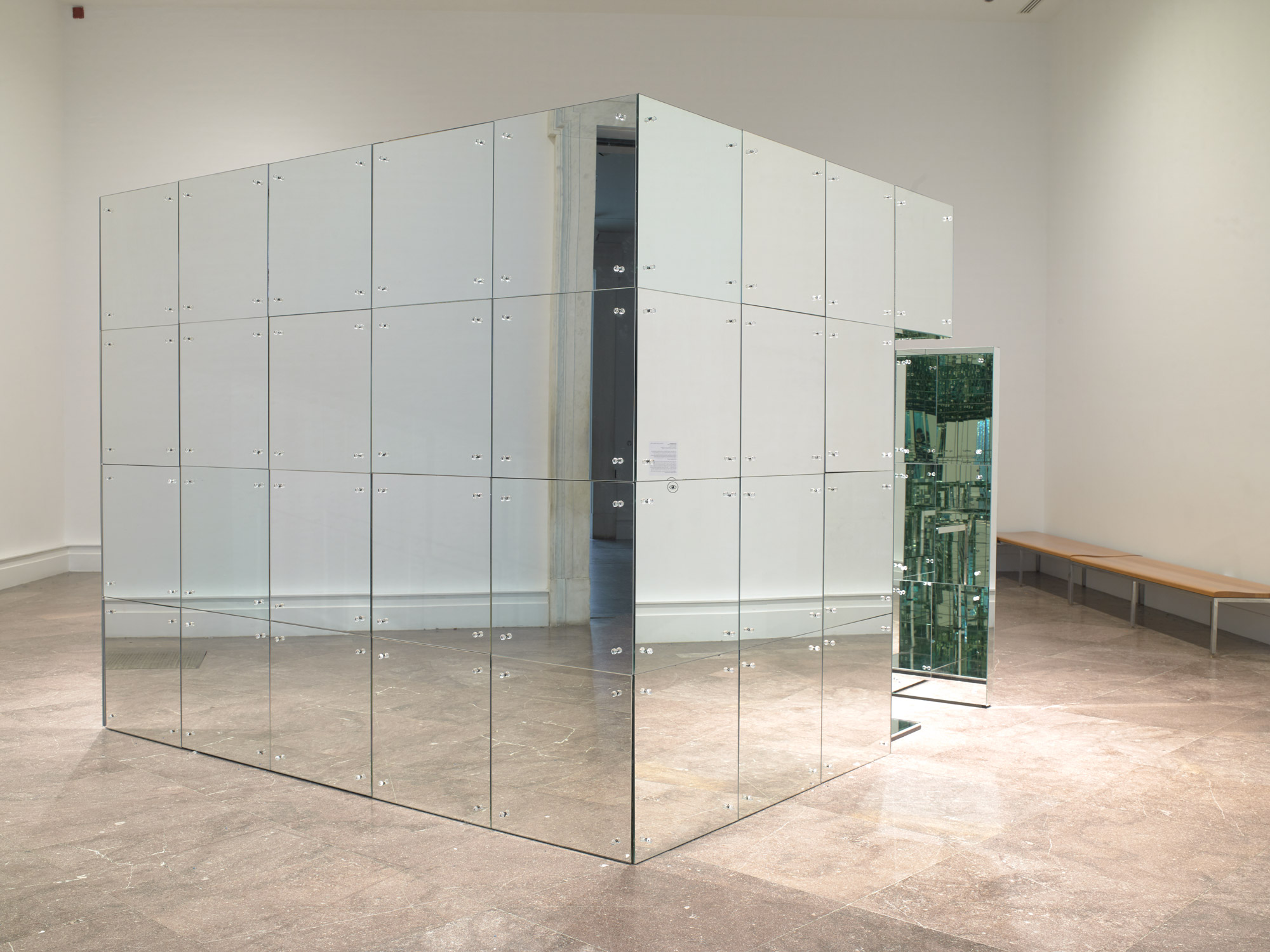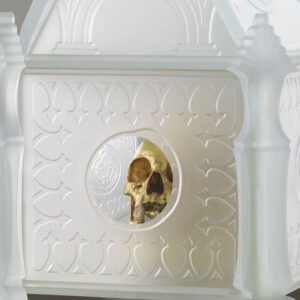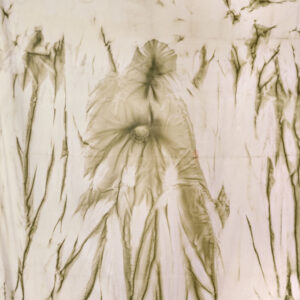Vault 1993

Tim Whiten, Vault, 1993
Wood, mirror, 198.1 x 243.8 x 182.9 cm
Art Windsor-Essex
Since 1990, Whiten has employed mirrors in his mixed-media works to explore the nature of human perception, exemplified by Draw, 1993, Victor, 1993, and Vault, the largest of his mirrored works. Comprising an immense dome constructed of mirrors, Vault is intended to be hung shoulder height from the ceiling, resembling an enormous chandelier. Its angled exterior surfaces reflect the walls and ceilings of the surrounding environment. Similarly, the interior surface is lined with multifaceted mirrored planes. Standing within it, we become acutely aware of the limitations of our ordinary physical senses. Familiar sounds are muffled, truncated, transformed. We anticipate seeing our own reflection. Instead, our self-image is elusive, partially eclipsed; only fragments are captured.


Vault finds comparison with Mirrored Room, 1966, by Lucas Samaras (1936–2024), composed of a room-sized cube containing a mirrored table and chair, in the collection of the Buffalo AKG Art Museum (formerly the Albright-Knox Art Gallery). An exhibition wall label states: “The idea for the Mirrored Room came to Samaras as early as 1963, when he was writing a short story entitled ‘Killman.’ His title character lived in a mirrored house surrounded by endless reflections and repetitions of himself.” In Mirrored Room, Samaras created a space in which the only images are “drawn” by the reflections of visitors.
Similarly, Whiten is interested in creating an immersive experience for audiences with Vault, one that parallels a transcendental experience. Achieving spiritual transcendence suggests that one has moved beyond the ordinary limitations of physical reality as apprehended by the senses. Like Victor, we are unable to discern our own reflection in the mirrored surfaces of Vault. Unlike Victor, our engagement with this work moves us across the threshold from the finite into the realm of infinite reflections.
Vault, Whiten’s “cosmic” dome, references the heavens as depicted in sacred architecture; specifically, the dome or vault of heaven in Islam and the stupa or dome-shaped sacred burial mounds in Buddhism housing the Buddha’s relics. A symbol of perfection, of eternity, it denotes the meeting place of heaven and earth, and the entrance into eternal life. Like the cosmic umbrella or branches of the cosmic tree, the canopy of heaven offers shelter, warmth, and protection. It also becomes a portal to another dimension, where a sense of the individual merges with the universal, underscoring the interconnectedness of all things.

 About the Author
About the Author
 More Online Art Books
More Online Art Books
 Acknowledgements
Acknowledgements